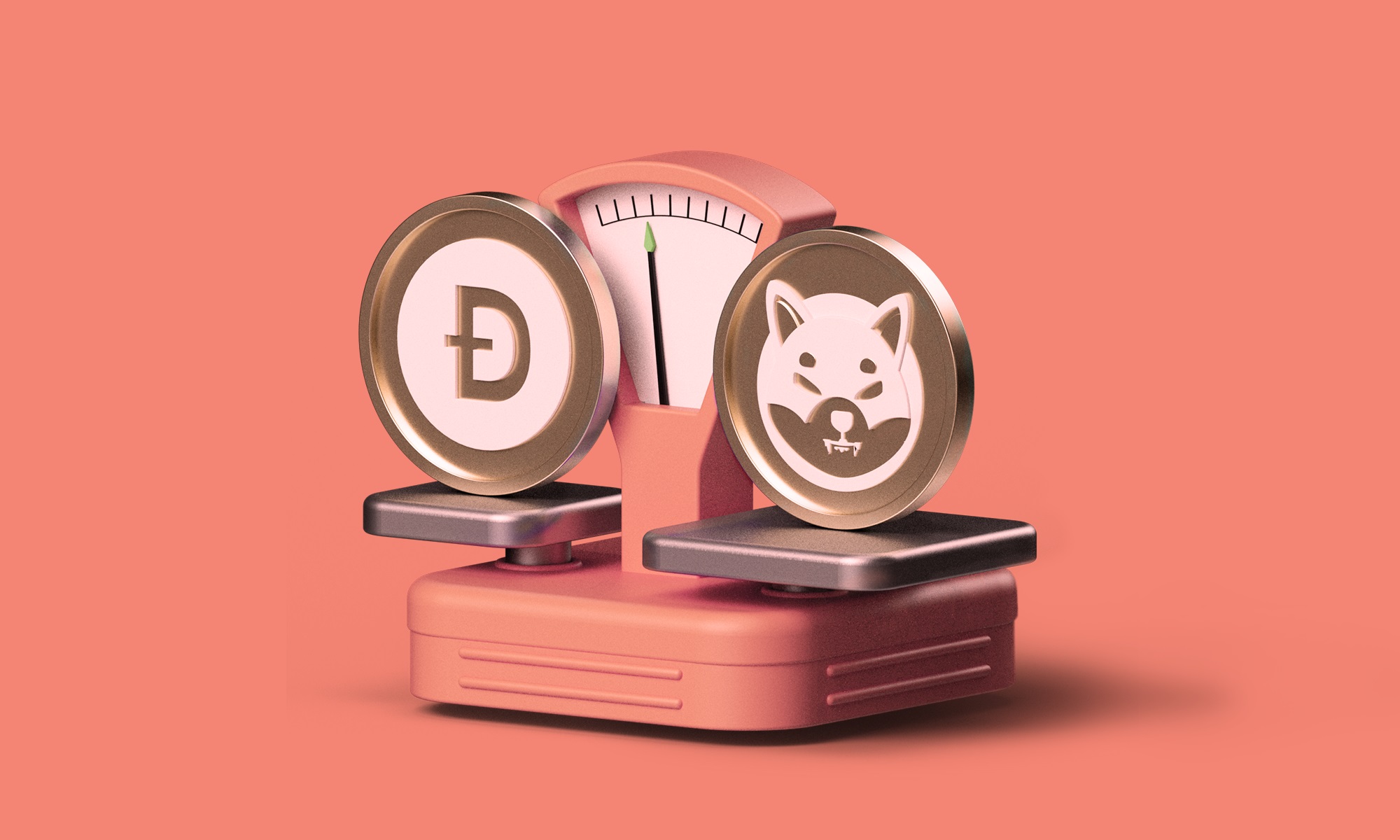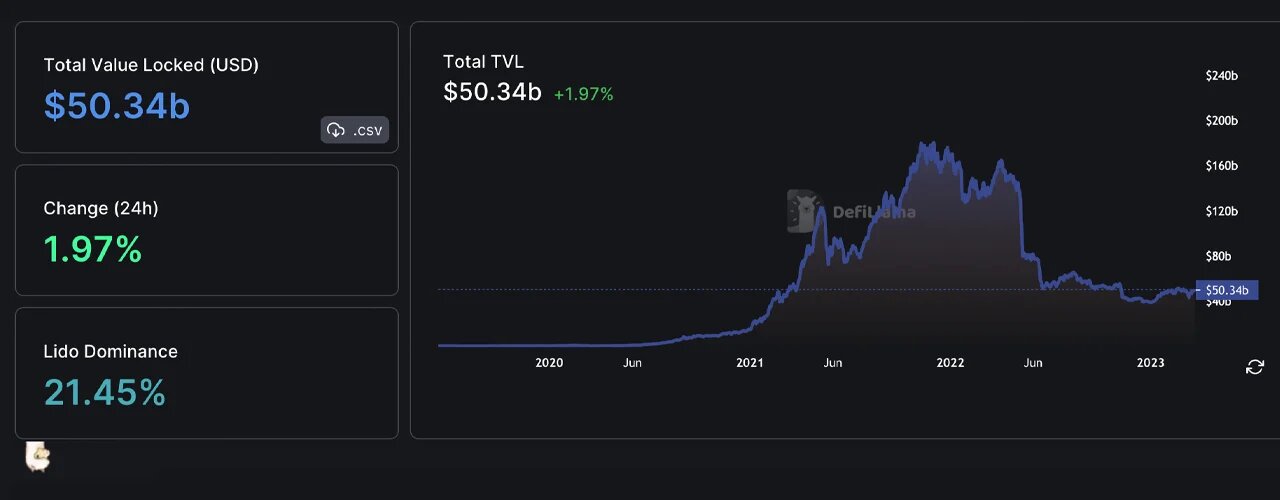Introduction
In the world of cryptocurrencies, market cap is a term that is frequently used to measure the size and value of a particular cryptocurrency. It serves as an important metric for investors, traders, and enthusiasts who want to assess the overall strength and potential of a digital asset. Understanding market cap is essential for making informed decisions in the rapidly evolving crypto market.
Market cap, short for market capitalization, is a measure of the total value of a cryptocurrency. It represents the current market price of the cryptocurrency multiplied by the total number of coins or tokens in circulation. Essentially, it reflects the market’s perception of the value and potential of a specific cryptocurrency.
The calculation of market cap provides an insight into the relative size of different cryptocurrencies in the market. It allows investors and traders to compare the value of one cryptocurrency to another and assess its performance over time. Market cap is an important factor in determining the potential risks and rewards associated with investing in a particular cryptocurrency.
Market cap is calculated by multiplying the current price of a cryptocurrency by the total circulating supply. For instance, if a cryptocurrency has a price of $10 and a circulating supply of 1 million coins, its market cap would be $10 million. It should be noted that market cap can fluctuate due to changes in price and circulating supply.
The importance of market cap lies in its ability to provide a snapshot of a cryptocurrency’s overall standing in the market. Cryptocurrencies with a higher market cap are generally perceived to be more established and have a larger user base. They are often considered to be more stable and less susceptible to market volatility.
Definition of Market Cap
Market cap, short for market capitalization, is a term used to describe the total value of a cryptocurrency. It represents the current market price of the cryptocurrency multiplied by the total number of coins or tokens in circulation.
Market cap is often seen as a measure of the size and value of a cryptocurrency within the broader market. It helps investors, traders, and enthusiasts assess the relative position of a cryptocurrency and make informed decisions.
The calculation of market cap is straightforward. It involves multiplying the current price of a cryptocurrency by the total number of coins or tokens in circulation. For example, if a cryptocurrency has a price of $10 and a circulating supply of 1 million coins, its market cap would be $10 million.
Market cap is widely used to compare different cryptocurrencies and evaluate their performance. It provides a standardized metric to determine the relative strength and potential of cryptocurrencies in the market. Cryptocurrencies with higher market caps are generally seen as more established and have a larger user base. They are often considered to be more stable and less susceptible to market volatility.
However, it is important to note that market cap alone does not provide a complete picture of a cryptocurrency’s value or potential. It should be used in conjunction with other factors, such as trading volume, development activity, and market trends. Market cap is just one aspect to consider when evaluating the investment prospects of a cryptocurrency.
Market cap is typically categorized into different levels, such as small cap, mid cap, and large cap. These categories help investors and traders gauge the risk and potential rewards associated with different cryptocurrencies. Small cap cryptocurrencies may have higher growth potential but also carry more risk, while large cap cryptocurrencies are generally more stable but may have slower growth.
In summary, market cap is a measure of the total value of a cryptocurrency. It is calculated by multiplying the current price of the cryptocurrency by the total number of coins or tokens in circulation. Market cap is an important metric for comparing and evaluating cryptocurrencies, but it should be used in conjunction with other factors to make informed investment decisions.
How Market Cap Is Calculated
Calculating the market capitalization, or market cap, of a cryptocurrency involves a simple formula: multiplying the current price of the cryptocurrency by the total number of coins or tokens in circulation. This calculation provides an estimate of the total value of the cryptocurrency within the market.
To begin calculating the market cap, you need to determine the current price of the cryptocurrency. This can be obtained from various sources, such as cryptocurrency exchanges or financial websites that track real-time prices.
The next step is to determine the total circulating supply of the cryptocurrency. The circulating supply refers to the number of coins or tokens that are actively available and in the hands of investors. It does not include coins or tokens that are locked, reserved, or held by the project team or developers.
Once you have obtained the current price and the total circulating supply, you can multiply these two figures together to calculate the market cap of the cryptocurrency. For example, if the current price of a cryptocurrency is $10 and the total circulating supply is 1 million coins, the market cap would be $10 million.
It’s important to note that market cap can change dynamically as the price of the cryptocurrency and the circulating supply fluctuate. As the price of the cryptocurrency increases or decreases, the market cap will reflect these changes. Similarly, if there are changes in the circulating supply, such as a token burn or a release of new tokens, the market cap will be affected.
Market cap is often used to compare the value and size of different cryptocurrencies. It provides investors and traders with a standardized metric to assess the relative standing of cryptocurrencies in the market. However, it is crucial to consider other factors such as trading volume, market trends, and development activity in conjunction with market cap to make informed investment decisions.
In summary, calculating market cap involves multiplying the current price of a cryptocurrency by the total circulating supply. This calculation provides an estimate of the total value of the cryptocurrency within the market. Market cap can change dynamically as the price and circulating supply fluctuate, and it is an important metric for comparing and evaluating cryptocurrencies.
Importance of Market Cap in Crypto
Market capitalization, or market cap, plays a significant role in the world of cryptocurrencies. It is a crucial metric that provides valuable insights into the overall strength, potential, and position of a cryptocurrency within the market. Understanding the importance of market cap can help investors, traders, and enthusiasts make informed decisions and navigate the complex crypto landscape.
One of the key reasons why market cap is important in the crypto space is that it allows for easy comparison between different cryptocurrencies. Market cap provides a standardized metric to assess the relative size and value of cryptocurrencies. Investors can use it as a tool to evaluate the potential risks and rewards associated with investing in a particular cryptocurrency.
Market cap also serves as an indicator of a cryptocurrency’s stability. Generally, cryptocurrencies with higher market caps are considered more established and have a larger user base. They tend to exhibit greater stability and resilience to market volatility. This can be reassuring for investors who are seeking a more stable investment option within the crypto market.
Furthermore, market cap can influence the perception of a cryptocurrency within the wider financial community. A cryptocurrency with a high market cap often garners more attention and credibility. It can attract institutional investors, partnerships, and mainstream adoption. High market cap cryptocurrencies are more likely to be listed on major exchanges and attract liquidity, making them more accessible for traders and investors.
Another significance of market cap is the categorization of cryptocurrencies into different groups, such as small cap, mid cap, and large cap. These categories help investors and traders assess the risk and potential rewards associated with different cryptocurrencies. Small cap cryptocurrencies often present higher growth potential but can be more volatile and risky. On the other hand, large cap cryptocurrencies are generally more stable but may have slower growth.
Market cap also plays a crucial role in determining the composition of cryptocurrency indices and market benchmarks. Indices like the S&P Cryptocurrency Broad Market Index and the Crypto20 are often weighted based on market capitalization. The inclusion of a cryptocurrency in such indices can attract more attention and investments from institutional players.
It’s important to note that market cap alone should not be the sole factor in making investment decisions. Other factors, such as trading volume, development activity, regulatory landscape, and market trends, should also be considered. However, market cap provides a valuable starting point for investors and traders to evaluate the potential of a cryptocurrency and assess its position within the broader market.
In summary, market cap is an important metric in the crypto space that allows for easy comparison between different cryptocurrencies. It provides insights into a cryptocurrency’s stability, credibility, and potential for growth. Market cap categorization helps investors assess risk and rewards. While market cap is a valuable tool, it should be used in conjunction with other factors to make well-informed investment decisions in the crypto market.
Different Categories of Market Cap
In the world of cryptocurrencies, market cap is often used to categorize and compare different cryptocurrencies based on their size and value. These categories, known as market cap categories, provide investors and traders with a framework to assess the relative strength and potential of cryptocurrencies. While the specific definitions may vary, there are generally three predominant categories: small cap, mid cap, and large cap.
1. Small Cap: Small cap cryptocurrencies typically have a lower market capitalization compared to their larger counterparts. They are considered to be at an early stage of development and often have a smaller user base. Small cap cryptocurrencies present higher growth potential but can also be more volatile and risky. Investors who are willing to take higher risks may find opportunities in this category, as these cryptocurrencies have the potential for substantial returns if they succeed.
2. Mid Cap: Mid cap cryptocurrencies fall between small cap and large cap in terms of market capitalization. They are often seen as a balance between growth potential and stability. Mid cap cryptocurrencies have a relatively larger market capitalization than small cap ones but are not as established or stable as large cap cryptocurrencies. They may offer moderate growth opportunities with a relatively lower level of risk.
3. Large Cap: Large cap cryptocurrencies have the highest market capitalization in the market. They are usually more established, widely recognized, and have a larger user base. Large cap cryptocurrencies are often considered to be more stable and less volatile compared to smaller cap counterparts. They may have slower growth rates but are generally seen as safer investment options within the crypto market.
It is important to note that the definitions and specific market cap thresholds for each category may vary among different market participants and sources. The boundaries between small cap, mid cap, and large cap are not fixed and can change over time as the market evolves. It’s essential for investors and traders to regularly reassess the market cap and relative position of cryptocurrencies to make informed decisions.
Market cap categories can be useful for investors and traders to tailor their investment strategies based on their risk appetite and investment goals. Some investors may prefer the potential high returns of small cap cryptocurrencies, while others may opt for the stability and security of large cap cryptocurrencies.
However, it is important to consider market cap as just one aspect when evaluating cryptocurrencies. Other factors, such as trading volume, development activity, market trends, and regulatory landscape, should also be taken into account to get a comprehensive understanding of a cryptocurrency’s potential.
In summary, market cap categories provide a framework for investors and traders to categorize and compare different cryptocurrencies based on their size and value. Small cap cryptocurrencies offer higher growth potential but are more volatile, while large cap cryptocurrencies are more stable but may have slower growth. Mid cap cryptocurrencies strike a balance between the two. Investors should consider market cap categories as part of their overall assessment of a cryptocurrency’s investment potential.
Limitations of Market Cap
While market capitalization, or market cap, is a widely used metric in the cryptocurrency market, it is important to acknowledge its limitations. Relying solely on market cap to assess the value and potential of a cryptocurrency may overlook important factors and lead to incomplete assessments. Here are some of the limitations of market cap:
1. Price Manipulation: Market cap is based on the current price of a cryptocurrency, which can be subject to price manipulation. Illiquid or low-volume cryptocurrencies may be more susceptible to price manipulation, artificially inflating or deflating their market cap. This highlights the importance of considering other factors, such as trading volume and liquidity, in conjunction with market cap to get a more accurate picture of a cryptocurrency’s value.
2. Circulating Supply: Market cap is calculated by multiplying the current price by the total circulating supply of a cryptocurrency. However, determining the accurate circulating supply can be challenging. Cryptocurrencies may have locked, reserved, or unsold tokens that are not actively traded, but are still included in the total supply. This can inflate the market cap, leading to an inaccurate representation of the cryptocurrency’s value.
3. Market Manipulation: Market cap can be influenced by market manipulation techniques, such as “pump and dump” schemes. These schemes involve artificially inflating the price and market cap of a cryptocurrency through coordinated buying, followed by selling to unsuspecting investors. This can create a false perception of demand and value, misleading investors who rely solely on market cap as an indicator.
4. Lack of Fundamental Analysis: Market cap focuses solely on the market value of a cryptocurrency and does not take into account its underlying technology, development team, partnerships, or market adoption. An accurate valuation of a cryptocurrency requires a deeper analysis of these fundamental factors, which market cap alone does not provide.
5. Varying Definitions: Different sources and market participants may use slightly different definitions and methodologies when calculating market cap. This inconsistency can make it challenging to compare market caps across different platforms or accurately evaluate the relative strength of cryptocurrencies.
6. Market Volatility: Cryptocurrency markets are known for their volatility, with prices fluctuating dramatically within short periods. Market cap captures the value of a cryptocurrency at a specific point in time and may not reflect the rapidly changing market conditions. As such, it is essential to consider market cap in conjunction with other factors and to regularly reassess its relevance.
Despite these limitations, market cap remains a valuable metric for comparing and assessing cryptocurrencies. It provides a standardized measure of a cryptocurrency’s size and value within the market. However, to gain a more comprehensive understanding of a cryptocurrency’s worth and potential, it is important to consider market cap alongside other factors, such as trading volume, development activity, market trends, and fundamental analysis.
Factors Affecting Market Cap
The market capitalization, or market cap, of a cryptocurrency is influenced by various factors that can affect its value and perceived potential. Understanding these factors is crucial for investors, traders, and enthusiasts to make informed decisions in the crypto market. Here are some key factors that can impact market cap:
1. Price Fluctuations: The most direct factor impacting market cap is the price fluctuations of a cryptocurrency. As the price of a cryptocurrency increases or decreases, its market cap will correspondingly increase or decrease. Significant price movements can have a substantial impact on the overall market cap and the perceived value of the cryptocurrency.
2. Circulating Supply: The total circulating supply of a cryptocurrency also plays a role in determining its market cap. A larger circulating supply typically leads to a higher market cap, as there are more coins or tokens contributing to the overall value. However, it’s important to consider the quality of the circulating supply, as locked or reserved tokens may not actively contribute to trading and liquidity.
3. Market Volume and Liquidity: Trading volume and liquidity significantly affect market cap. Higher trading volumes and greater liquidity generally indicate a higher level of market activity, which can lead to more accurate price discovery and increased market cap. Cryptocurrencies with low trading volumes and liquidity may have less accurate market cap figures and can be more susceptible to price manipulation.
4. Adoption and Usage: The adoption and usage of a cryptocurrency within the broader market can impact its market cap. Increased adoption and usage signify a growing user base, which can drive up demand and potentially increase the market cap. Factors such as merchant acceptance, partnerships, and use cases can significantly influence the perceived value and potential of a cryptocurrency.
5. Market Sentiment and Investor Confidence: Market sentiment and investor confidence can heavily influence market cap. Positive news, regulatory developments, or favorable market conditions can boost investor confidence, leading to an increase in demand and subsequently driving up market cap. Conversely, negative news or market uncertainty can lead to a decrease in market cap as investors may sell off their holdings.
6. Competition and Market Position: The competitive landscape within the cryptocurrency market can impact market cap. Cryptocurrencies with strong market positions, innovative features, and a strong community and development team may attract more attention and investment, leading to a higher market cap. Conversely, increased competition or the emergence of competing cryptocurrencies can put downward pressure on market cap.
7. Technological Advancements and Development: The technical advancements and ongoing development of a cryptocurrency can play a significant role in determining its market cap. Regular updates, improvements, and the implementation of new features can enhance the perceived value and potential of a cryptocurrency, leading to an increase in market cap.
8. Regulatory Environment: The regulatory environment also influences market cap. Favorable regulatory conditions, clear guidelines, and increased legal acceptance can boost investor confidence and drive up market cap. On the other hand, stringent regulations or negative regulatory developments can lead to a decrease in market cap as investors become more cautious.
It is important to note that each cryptocurrency may be affected differently by these factors, and their impact on market cap may vary. Therefore, a holistic analysis of the specific factors affecting a particular cryptocurrency is necessary to make well-informed investment decisions.
In summary, factors such as price fluctuations, circulating supply, market volume, adoption, market sentiment, competition, technological advancements, and the regulatory environment all influence the market capitalization of a cryptocurrency. Understanding these factors and their impact can help investors and traders assess the value and potential of cryptocurrencies in the market.
Comparing Market Caps in Crypto
Comparing market capitalizations, or market caps, is a common practice in the cryptocurrency market. It allows investors, traders, and enthusiasts to evaluate the relative size, value, and potential of different cryptocurrencies. However, it is important to approach these comparisons with caution and consider other factors alongside market cap to gain a comprehensive understanding. Here are some key considerations when comparing market caps in crypto:
1. Market Cap Rankings: Market cap rankings provide a quick overview of the largest cryptocurrencies in the market. Bitcoin, as the first and most well-known cryptocurrency, typically holds the top spot in terms of market cap. However, the rankings can change as new projects gain traction or existing ones experience price fluctuations. It is important to regularly reassess the rankings and consider the market cap in conjunction with other factors.
2. Relative Comparison: Comparing the market caps of different cryptocurrencies can help assess their relative size and value. Cryptocurrencies with higher market caps are generally perceived as more established and have a larger user base. However, it is important to consider the specifics of each cryptocurrency, such as its use case, technology, adoption, and development progress, to get a better understanding of its potential and future prospects.
3. Market Cap and Price: Market cap and price are often linked, but they can provide different insights. A cryptocurrency with a high price and low circulating supply may have a similar or even smaller market cap compared to a cryptocurrency with a lower price but a larger circulating supply. Evaluating market cap alongside other factors, such as trading volume and liquidity, can help provide a more accurate assessment of a cryptocurrency’s overall value.
4. Category Comparison: Market cap categories, such as small cap, mid cap, and large cap, provide a framework for comparing cryptocurrencies based on their size and value. Small cap cryptocurrencies may have higher growth potential but also carry more risk, while large cap cryptocurrencies are generally more stable but may have slower growth. Considering the category of a cryptocurrency within the market cap spectrum can assist in assessing risk and potential returns.
5. Market Cap and Trading Volume: Trading volume is another important factor to consider alongside market cap. Higher trading volume can indicate increased market activity and liquidity, which can impact the accuracy and reliability of market cap figures. Comparing market caps with corresponding trading volumes can provide insights into the liquidity and trading activity of a cryptocurrency.
6. Market Cap Comparison Over Time: Comparing market caps of cryptocurrencies over time can reveal trends and shifts in the market. Monitoring changes in market cap rankings and individual cryptocurrency market caps can provide valuable insights into the evolving landscape. This comparison can help identify emerging trends, new opportunities, and potential risks.
7. Consideration of Other Factors: While market cap is a useful metric for comparing cryptocurrencies, it should not be the sole factor in making investment decisions. It is essential to consider other factors such as development activity, partnerships, regulatory landscape, market trends, and the utility of the cryptocurrency’s underlying technology. These factors can have a significant impact on the long-term potential and success of a cryptocurrency.
Comparing market caps in the cryptocurrency market can provide valuable insights into the relative size, value, and potential of different cryptocurrencies. However, it is important to consider other factors alongside market cap to gain a holistic view. By combining market cap with comprehensive research and analysis, investors and traders can make more informed decisions in the dynamic and evolving crypto market.
Conclusion
Market capitalization, or market cap, is a fundamental metric in the cryptocurrency market that provides valuable insights into the size, value, and potential of cryptocurrencies. Understanding market cap is crucial for investors, traders, and enthusiasts to make informed decisions and navigate the complex crypto landscape.
Throughout this article, we have explored the definition and calculation of market cap, as well as its importance in assessing the strength and potential of cryptocurrencies. We have also discussed the different categories of market cap and the limitations that should be considered when relying solely on this metric.
Factors such as price fluctuations, circulating supply, market volume, adoption, market sentiment, competition, technological advancements, and the regulatory environment can all impact the market cap of cryptocurrencies. It is important to consider these factors in conjunction with market cap to gain a comprehensive understanding of a cryptocurrency’s value and potential.
When comparing market caps in the crypto market, it is essential to approach these comparisons with caution. Relative comparisons, market cap categories, market cap rankings, and other factors such as trading volume and liquidity should be taken into account to make well-informed investment decisions.
In conclusion, market cap is a valuable metric that assists in evaluating and comparing cryptocurrencies. However, it should be used in conjunction with other factors and comprehensive research to gain a more accurate understanding of a cryptocurrency’s value, potential growth, and risks. By considering market cap alongside other critical factors, investors and traders can make informed decisions in the dynamic and ever-evolving world of cryptocurrency.

























